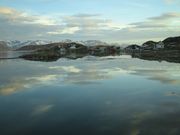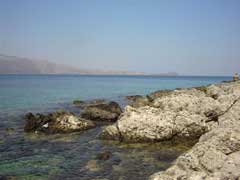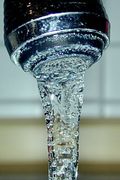 Water’s effect on earthquake development
Water’s effect on earthquake development
EU-funded geologists are studying the weakening effects of water on mineral formations in the Earth’s crust and mantle with potential implications for earthquake formation.
The Earth’s lithosphere, its outermost shell, is about 100 kilometres deep and consists of giant tectonic plates that fit together like puzzle pieces around the globe. The lithosphere (the crust and a part of the upper mantle) is brittle enough at some locations just below the crust to demonstrate faulting leading to earthquakes.
During volcanic eruptions, hot magma consisting of molten or semi-molten metal under the mantle erupts onto the surface in the form of lava. Certain volcanoes in the Carpathian-Pannonian region picked up rocks from the lithosphere (xenoliths) during their eruption.
Given that water and its constituents (H2O, H+ and OH-) are known to weaken minerals, these xenoliths now close enough to the surface to be studied are an excellent system with which to evaluate water distribution in lithospheric mineral formations and assess potential effects on earthquake development.
European researchers supported by EU-funding of the ‘“Water” in the Earth's lithosphere and its bearing on geophysical properties’ (NAMS) project used a revolutionary new infrared (IR) spectroscopy technique enabling simple analysis of water and its constituents in a large number of xenoliths to evaluate potential effects on geophysical parameters.
Researchers are studying diffusion profiles of water and its distribution in the lithosphere and integrating new information into already existing seismic databases.
Scientists have successfully developed the technique to evaluate water incorporated into otherwise anhydrous (without water) minerals and carried out analyses of more than 32 xenoliths from lower crust or upper mantle regions of the lithosphere. Results were used to construct an international spectral database of water regions.
In addition, researchers used a novel experimental technique to study the effects of water at the lithosphere-asthenosphere (directly under the lithosphere) boundary.
Finally, a new quantitative IR attenuated total reflection (ATR) spectroscopy method was developed to analyse water in clays.
Continuing spectroscopic analysis of water and its constituents in the Earth’s lithosphere should provide important information regarding the weakening effect of water on normally anhydrous minerals and its role in seismic events.
| Contact information |
FALUS, György (Dr) MAGYAR ALLAMI EOTVOS LORAND GEOFIZIKAI INTEZET Department of Geophysical Research/Eötvös Loránd Geophysical Institute of Hungary Senior Researcher BUDAPEST HUNGARY
(email: http://cordis.europa.eu/MailAnon/index.cfm?fuseaction=Hiding.PostalForm&address=00660061006c0075007300400065006c00670069002e00680075) Phone: +36-1-252-4999 Fax: +36-1-363-7256 |
|---|---|
| News type | Inbrief |
| File link |
http://cordis.europa.eu/fetch?ACTION=D&CALLER=OFFR_TM_EN&RCN=8702&dm_i=GLX,UKBH,65Y17U,2IGDW,1 |
| Source of information | CORDIS/ FP7-PEOPLE programme |
| Keyword(s) | earthquake |
| Subject(s) | METHTODOLOGY - STATISTICS - DECISION AID , NATURAL MEDIUM , RISKS AND CLIMATOLOGY |
| Relation | http://www.semide.net/countries/fol135532/country768064 |
| Geographical coverage | Hungary |
| News date | 19/06/2012 |
| Working language(s) | ENGLISH |
 you are not logged in
you are not logged in





